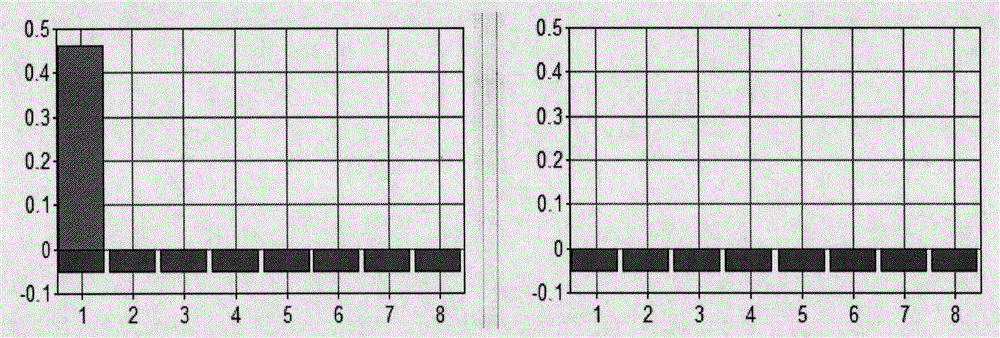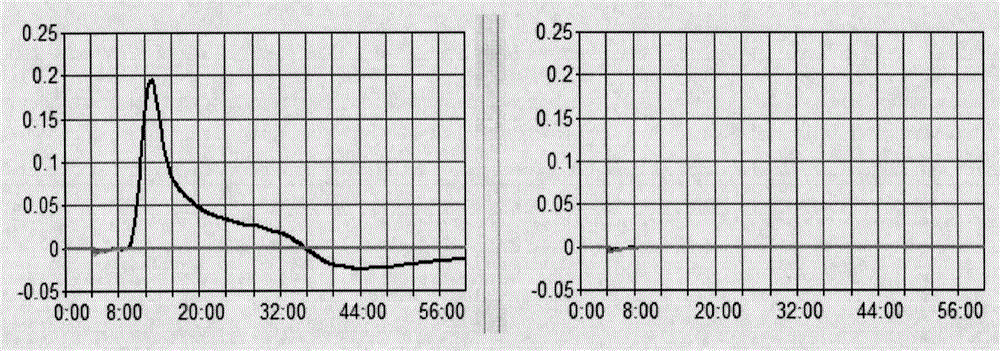LAMP primer for detecting Asperillus Parasiticus, and kit including primer
A technology of Aspergillus parasiticus and kit, which is applied to LAMP primers and kits containing the primers, can rapidly detect Aspergillus parasiticus, and can solve problems such as poor timeliness, false positives, and long identification period.
- Summary
- Abstract
- Description
- Claims
- Application Information
AI Technical Summary
Problems solved by technology
Method used
Image
Examples
Embodiment 1
[0035] Example 1 is used to detect the design and synthesis of Aspergillus parasitica LAMP primers
[0036] The histidine kinase mRNA gene (AY430047.1) of Aspergillus parasitica was selected, and the specific sequence region was selected to design primers according to the NCBI comparison results. Primers were designed using PrimerExplorer, a primer design support software for the LAMP method, and the online design website is: http: / / primerexplorer.jp / e / . A set of primers that meet the design requirements of LAMP primers was selected by screening. The primers include 2 outer primers (F3, B3), 2 inner primers (FIP, BIP) and 2 loop primers (LF and LB), synthesized by Sangon Bioengineering (Shanghai) Co., Ltd. The histidine kinase mRNA gene can be used as a specific gene for specific identification of Aspergillus parasitica.
Embodiment 2
[0037] The preparation of embodiment 2 Aspergillus parasitica genome DNA template
[0038] Genomic DNA of Aspergillus parasitica was extracted using a modified CTAB method. The standard strain of Aspergillus parasitica (40365) was provided by Liaoning Entry-Exit Inspection and Quarantine Bureau. The detailed steps are: (1) Take a certain amount of mycelium in a mortar, grind it into powder with liquid nitrogen and transfer it to a 1.5mL centrifuge tube; (2) Add 600 μL of preheated CTAB solution (2% CTAB, 200mmol / LTris-HCl, 20mmol / LEDTApH=8.0, 1.4mmol / LNaCl, 1% PVP-40, 0.2% β-mercaptoethanol), quickly close the tube cap, fully shake, 65 ° C water bath for 30min, during which the shake is constantly; (3 ) After cooling at room temperature, add an equal volume of phenol-chloroform-isoamyl alcohol (25:24:1), repeatedly invert and mix for 1 min, and centrifuge at 13000r / min for 10 min; (4) draw the supernatant into another centrifuge tube, add volume of chloroform-isoamyl alcoho...
Embodiment 3
[0039] Embodiment 3 utilizes LAMP primer to detect the specificity analysis of Aspergillus parasitica
[0040] Aspergillus flavus, Aspergillus glider, Aspergillus fumigatus, Aspergillus versicolor within the genus Aspergillus and Fusarium graminearum, Fusarium solani, Penicillium insulae, Penicillium aeruginosa, Staphylococcus aureus and Escherichia coli Bacillus, etc. were used as samples for specificity testing, and amplification was performed according to the LAMP reaction system to verify the specificity of the Aspergillus parasitica primer combination. Analyze the peak time and peak value of the LA-320C program, such as figure 1 and figure 2 shown. From figure 1 and figure 2 It can be seen that the primers only positively reacted with Aspergillus parasitica, and with Aspergillus flavus, Aspergillus spp., Aspergillus fumigatus, Aspergillus versicolor within the genus; ; and Staphylococcus aureus and Escherichia coli have no amplification reaction, which proves that ...
PUM
 Login to View More
Login to View More Abstract
Description
Claims
Application Information
 Login to View More
Login to View More - R&D
- Intellectual Property
- Life Sciences
- Materials
- Tech Scout
- Unparalleled Data Quality
- Higher Quality Content
- 60% Fewer Hallucinations
Browse by: Latest US Patents, China's latest patents, Technical Efficacy Thesaurus, Application Domain, Technology Topic, Popular Technical Reports.
© 2025 PatSnap. All rights reserved.Legal|Privacy policy|Modern Slavery Act Transparency Statement|Sitemap|About US| Contact US: help@patsnap.com



